#Artificial intelligence career guide
Explore tagged Tumblr posts
Text
Artificial Intelligence [AI] in 2025: Jobs, Tools, Automation & Career Ultimate Article
What is Artificial Intelligence (AI)? Definition and Concept Artificial Intelligence (AI) refers to the development of computer systems that can perform tasks typically requiring human intelligence, such as learning, problem-solving, reasoning, perception, and language understanding. These systems use algorithms and data to make decisions, often without human intervention, enabling them to…
#AI automation tools#AI career opportunities#AI in business automation#AI in the workplace 2025#AI job market trends#AI job roles and salaries#AI jobs 2025#AI revolution 2025#ai tools#AI tools for productivity#ai websites#AI-powered job search tools#artificial intelligence#Artificial intelligence career guide#Best AI tools 2025#chat gpt#chatgpt#chatgpt prompts for productivity#Future of AI jobs#google bard ai website#Machine learning jobs 2025#Top AI certifications 2025#top artificial intelligence companies in india listed on nse
1 note
·
View note
Text

The Comprehensive Guide to Web Development, Data Management, and More
Introduction
Everything today is technology driven in this digital world. There's a lot happening behind the scenes when you use your favorite apps, go to websites, and do other things with all of those zeroes and ones — or binary data. In this blog, I will be explaining what all these terminologies really means and other basics of web development, data management etc. We will be discussing them in the simplest way so that this becomes easy to understand for beginners or people who are even remotely interested about technology. JOIN US
What is Web Development?
Web development refers to the work and process of developing a website or web application that can run in a web browser. From laying out individual web page designs before we ever start coding, to how the layout will be implemented through HTML/CSS. There are two major fields of web development — front-end and back-end.
Front-End Development
Front-end development, also known as client-side development, is the part of web development that deals with what users see and interact with on their screens. It involves using languages like HTML, CSS, and JavaScript to create the visual elements of a website, such as buttons, forms, and images. JOIN US
HTML (HyperText Markup Language):
HTML is the foundation of all website, it helps one to organize their content on web platform. It provides the default style to basic elements such as headings, paragraphs and links.
CSS (Cascading Style Sheets):
styles and formats HTML elements. It makes an attractive and user-friendly look of webpage as it controls the colors, fonts, layout.
JavaScript :
A language for adding interactivity to a website Users interact with items, like clicking a button to send in a form or viewing images within the slideshow. JOIN US
Back-End Development
The difference while front-end development is all about what the user sees, back end involves everything that happens behind. The back-end consists of a server, database and application logic that runs on the web.
Server:
A server is a computer that holds website files and provides them to the user browser when they request it. Server-Side: These are populated by back-end developers who build and maintain servers using languages like Python, PHP or Ruby.
Database:
The place where a website keeps its data, from user details to content and settings The database is maintained with services like MySQL, PostgreSQL, or MongoDB. JOIN US
Application Logic —
the code that links front-end and back-end It takes user input, gets data from the database and returns right informations to front-end area.

Why Proper Data Management is Absolutely Critical
Data management — Besides web development this is the most important a part of our Digital World. What Is Data Management? It includes practices, policies and procedures that are used to collect store secure data in controlled way.
Data Storage –
data after being collected needs to be stored securely such data can be stored in relational databases or cloud storage solutions. The most important aspect here is that the data should never be accessed by an unauthorized source or breached. JOIN US
Data processing:
Right from storing the data, with Big Data you further move on to process it in order to make sense out of hordes of raw information. This includes cleansing the data (removing errors or redundancies), finding patterns among it, and producing ideas that could be useful for decision-making.
Data Security:
Another important part of data management is the security of it. It refers to defending data against unauthorized access, breaches or other potential vulnerabilities. You can do this with some basic security methods, mostly encryption and access controls as well as regular auditing of your systems.
Other Critical Tech Landmarks
There are a lot of disciplines in the tech world that go beyond web development and data management. Here are a few of them:
Cloud Computing
Leading by example, AWS had established cloud computing as the on-demand delivery of IT resources and applications via web services/Internet over a decade considering all layers to make it easy from servers up to top most layer. This will enable organizations to consume technology resources in the form of pay-as-you-go model without having to purchase, own and feed that infrastructure. JOIN US
Cloud Computing Advantages:
Main advantages are cost savings, scalability, flexibility and disaster recovery. Resources can be scaled based on usage, which means companies only pay for what they are using and have the data backed up in case of an emergency.
Examples of Cloud Services:
Few popular cloud services are Amazon Web Services (AWS), Microsoft Azure, and Google Cloud. These provide a plethora of services that helps to Develop and Manage App, Store Data etc.
Cybersecurity
As the world continues to rely more heavily on digital technologies, cybersecurity has never been a bigger issue. Protecting computer systems, networks and data from cyber attacks is called Cyber security.
Phishing attacks, Malware, Ransomware and Data breaches:
This is common cybersecurity threats. These threats can bear substantial ramifications, from financial damages to reputation harm for any corporation.
Cybersecurity Best Practices:
In order to safeguard against cybersecurity threats, it is necessary to follow best-practices including using strong passwords and two-factor authorization, updating software as required, training employees on security risks.
Artificial Intelligence and Machine Learning
Artificial Intelligence (AI) and Machine Learning (ML) represent the fastest-growing fields of creating systems that learn from data, identifying patterns in them. These are applied to several use-cases like self driving cars, personalization in Netflix.
AI vs ML —
AI is the broader concept of machines being able to carry out tasks in a way we would consider “smart”. Machine learning is a type of Artificial Intelligence (AI) that provides computers with the ability to learn without being explicitly programmed. JOIN US
Applications of Artificial Intelligence and Machine Learning: some common applications include Image recognition, Speech to text, Natural language processing, Predictive analytics Robotics.
Web Development meets Data Management etc.
We need so many things like web development, data management and cloud computing plus cybersecurity etc.. but some of them are most important aspects i.e. AI/ML yet more fascinating is where these fields converge or play off each other.
Web Development and Data Management
Web Development and Data Management goes hand in hand. The large number of websites and web-based applications in the world generate enormous amounts of data — from user interactions, to transaction records. Being able to manage this data is key in providing a fantastic user experience and enabling you to make decisions based on the right kind of information.
E.g. E-commerce Website, products data need to be saved on server also customers data should save in a database loosely coupled with orders and payments. This data is necessary for customization of the shopping experience as well as inventory management and fraud prevention.
Cloud Computing and Web Development
The development of the web has been revolutionized by cloud computing which gives developers a way to allocate, deploy and scale applications more or less without service friction. Developers now can host applications and data in cloud services instead of investing for physical servers.
E.g. A start-up company can use cloud services to roll out the web application globally in order for all users worldwide could browse it without waiting due unavailability of geolocation prohibited access.
The Future of Cybersecurity and Data Management
Which makes Cybersecurity a very important part of the Data management. The more data collected and stored by an organization, the greater a target it becomes for cyber threats. It is important to secure this data using robust cybersecurity measures, so that sensitive information remains intact and customer trust does not weaken. JOIN US
Ex: A healthcare provider would have to protect patient data in order to be compliant with regulations such as HIPAA (Health Insurance Portability and Accountability Act) that is also responsible for ensuring a degree of confidentiality between a provider and their patients.
Conclusion
Well, in a nutshell web-developer or Data manager etc are some of the integral parts for digital world.
As a Business Owner, Tech Enthusiast or even if you are just planning to make your Career in tech — it is important that you understand these. With the progress of technology never slowing down, these intersections are perhaps only going to come together more strongly and develop into cornerstones that define how we live in a digital world tomorrow.
With the fundamental knowledge of web development, data management, automation and ML you will manage to catch up with digital movements. Whether you have a site to build, ideas data to manage or simply interested in what’s hot these days, skills and knowledge around the above will stand good for changing tech world. JOIN US
#Technology#Web Development#Front-End Development#Back-End Development#HTML#CSS#JavaScript#Data Management#Data Security#Cloud Computing#AWS (Amazon Web Services)#Cybersecurity#Artificial Intelligence (AI)#Machine Learning (ML)#Digital World#Tech Trends#IT Basics#Beginners Guide#Web Development Basics#Tech Enthusiast#Tech Career#america
6 notes
·
View notes
Text
In the span of just weeks, the U.S. government has experienced what may be the most consequential security breach in its history—not through a sophisticated cyberattack or an act of foreign espionage, but through official orders by a billionaire with a poorly defined government role. And the implications for national security are profound.
First, it was reported that people associated with the newly created Department of Government Efficiency (DOGE) had accessed the U.S. Treasury computer system, giving them the ability to collect data on and potentially control the department’s roughly $5.45 trillion in annual federal payments.
Then, we learned that uncleared DOGE personnel had gained access to classified data from the U.S. Agency for International Development, possibly copying it onto their own systems. Next, the Office of Personnel Management—which holds detailed personal data on millions of federal employees, including those with security clearances—was compromised. After that, Medicaid and Medicare records were compromised.
Meanwhile, only partially redacted names of CIA employees were sent over an unclassified email account. DOGE personnel are also reported to be feeding Education Department data into artificial intelligence software, and they have also started working at the Department of Energy.
This story is moving very fast. On Feb. 8, a federal judge blocked the DOGE team from accessing the Treasury Department systems any further. But given that DOGE workers have already copied data and possibly installed and modified software, it’s unclear how this fixes anything.
In any case, breaches of other critical government systems are likely to follow unless federal employees stand firm on the protocols protecting national security.
The systems that DOGE is accessing are not esoteric pieces of our nation’s infrastructure—they are the sinews of government.
For example, the Treasury Department systems contain the technical blueprints for how the federal government moves money, while the Office of Personnel Management (OPM) network contains information on who and what organizations the government employs and contracts with.
What makes this situation unprecedented isn’t just the scope, but also the method of attack. Foreign adversaries typically spend years attempting to penetrate government systems such as these, using stealth to avoid being seen and carefully hiding any tells or tracks. The Chinese government’s 2015 breach of OPM was a significant U.S. security failure, and it illustrated how personnel data could be used to identify intelligence officers and compromise national security.
In this case, external operators with limited experience and minimal oversight are doing their work in plain sight and under massive public scrutiny: gaining the highest levels of administrative access and making changes to the United States’ most sensitive networks, potentially introducing new security vulnerabilities in the process.
But the most alarming aspect isn’t just the access being granted. It’s the systematic dismantling of security measures that would detect and prevent misuse—including standard incident response protocols, auditing, and change-tracking mechanisms—by removing the career officials in charge of those security measures and replacing them with inexperienced operators.
The Treasury’s computer systems have such an impact on national security that they were designed with the same principle that guides nuclear launch protocols: No single person should have unlimited power. Just as launching a nuclear missile requires two separate officers turning their keys simultaneously, making changes to critical financial systems traditionally requires multiple authorized personnel working in concert.
This approach, known as “separation of duties,” isn’t just bureaucratic red tape; it’s a fundamental security principle as old as banking itself. When your local bank processes a large transfer, it requires two different employees to verify the transaction. When a company issues a major financial report, separate teams must review and approve it. These aren’t just formalities—they’re essential safeguards against corruption and error.
These measures have been bypassed or ignored. It’s as if someone found a way to rob Fort Knox by simply declaring that the new official policy is to fire all the guards and allow unescorted visits to the vault.
The implications for national security are staggering. Sen. Ron Wyden said his office had learned that the attackers gained privileges that allow them to modify core programs in Treasury Department computers that verify federal payments, access encrypted keys that secure financial transactions, and alter audit logs that record system changes. Over at OPM, reports indicate that individuals associated with DOGE connected an unauthorized server into the network. They are also reportedly training AI software on all of this sensitive data.
This is much more critical than the initial unauthorized access. These new servers have unknown capabilities and configurations, and there’s no evidence that this new code has gone through any rigorous security testing protocols. The AIs being trained are certainly not secure enough for this kind of data. All are ideal targets for any adversary, foreign or domestic, also seeking access to federal data.
There’s a reason why every modification—hardware or software���to these systems goes through a complex planning process and includes sophisticated access-control mechanisms. The national security crisis is that these systems are now much more vulnerable to dangerous attacks at the same time that the legitimate system administrators trained to protect them have been locked out.
By modifying core systems, the attackers have not only compromised current operations, but have also left behind vulnerabilities that could be exploited in future attacks—giving adversaries such as Russia and China an unprecedented opportunity. These countries have long targeted these systems. And they don’t just want to gather intelligence—they also want to understand how to disrupt these systems in a crisis.
Now, the technical details of how these systems operate, their security protocols, and their vulnerabilities are now potentially exposed to unknown parties without any of the usual safeguards. Instead of having to breach heavily fortified digital walls, these parties can simply walk through doors that are being propped open—and then erase evidence of their actions.
The security implications span three critical areas.
First, system manipulation: External operators can now modify operations while also altering audit trails that would track their changes. Second, data exposure: Beyond accessing personal information and transaction records, these operators can copy entire system architectures and security configurations—in one case, the technical blueprint of the country’s federal payment infrastructure. Third, and most critically, is the issue of system control: These operators can alter core systems and authentication mechanisms while disabling the very tools designed to detect such changes. This is more than modifying operations; it is modifying the infrastructure that those operations use.
To address these vulnerabilities, three immediate steps are essential. First, unauthorized access must be revoked and proper authentication protocols restored. Next, comprehensive system monitoring and change management must be reinstated—which, given the difficulty of cleaning a compromised system, will likely require a complete system reset. Finally, thorough audits must be conducted of all system changes made during this period.
This is beyond politics—this is a matter of national security. Foreign national intelligence organizations will be quick to take advantage of both the chaos and the new insecurities to steal U.S. data and install backdoors to allow for future access.
Each day of continued unrestricted access makes the eventual recovery more difficult and increases the risk of irreversible damage to these critical systems. While the full impact may take time to assess, these steps represent the minimum necessary actions to begin restoring system integrity and security protocols.
Assuming that anyone in the government still cares.
184 notes
·
View notes
Text
Excerpt from this story from Sierra Club:
The Environmental Protection Agency—the federal watchdog tasked with safeguarding the environment and human health—is facing “unprecedented” attacks under the new Trump administration, putting Americans’ ability to breathe clean air, drink clean water, and live healthy lives at risk, experts warn.
These attacks on the EPA, from mass terminations of employees to axing programs and funding intended to address pollution and advance clean energy, are part of a sweeping effort now underway to dismantle the administrative state. It’s a strategy specifically called for under Project 2025—the governing blueprint spearheaded by the Heritage Foundation and backed by over 100 right-wing organizations.
“With astonishing speed and disregard, Trump and his team are delivering on the promises of Project 2025,” said Stephanie Reese, director of strategic implementation and justice for Mom’s Clean Air Force. Reese was speaking at a press conference held earlier this month outside EPA headquarters, where environmental activists and Democratic members of Congress spoke out in protest of actions to undermine the agency by the Elon Musk–led Department of Government Efficiency (DOGE). The event was among many organized rallies outside the federal agencies that DOGE has targeted and infiltrated since President Trump took office, unleashing chaos and cuts affecting virtually all parts of the executive branch.
At the EPA, there has been an exodus of employees, a freeze on funding disbursement—including funds already authorized by Congress—as well as a dismissal of scientific advisory boards and a removal of climate change references from the agency’s website. Trump is installing industry lobbyists in key leadership posts, while his pick to head the agency—former New York Republican Congress member Lee Zeldin—has announced a set of five pillars to guide the EPA’s work, most of which deviate from the agency’s core mission to protect human health and the environment. Among the EPA’s new priorities under administrator Zeldin are “bringing back American auto jobs,” focusing on leading the world in artificial intelligence, and boosting fossil fuel development by pursuing “energy dominance” and permitting reform.
Michelle Roos, executive director of the Environmental Protection Network and a former EPA staffer, called these pillars “extraordinarily disingenuous.” “I think it speaks to a massive ignorance of what EPA does,” she told Sierra.
What is perhaps most concerning, Roos said, are the threats to government workers and widespread personnel terminations that risk crippling many agencies and departments, including the EPA. Just over a month into the new administration, hundreds of EPA staff have already been fired, placed on administrative leave, or pushed or incentivized into resigning. More than 300 career staffers have departed the agency since the November election, and on February 14, Trump fired nearly 400 probationary employees.
14 notes
·
View notes
Text
Book recs: possession, bodysnatching and bodysharing
Demons, ghosts, aliens, sentient bacteria, artificial intelligences - isn't there something fascinating about the idea of sharing a body with another being like a giant get-along t-shirt? No? Too bad, because I'm going to tell you about books featuring this trope anyway.
A note: multiple of these books are sequels where the bodysnatching/possession aspect plays little to no part in the first book. In all these cases, I still recommend starting with book one. I also in one case chose not to include a certain sequel that I loved as even mentioning it in this context would be a huge spoiler, so, uh, sorry about that.

For more details on the books, continue under the readmore. Titles marked with * are my personal favorites. And as always, feel free to share your own recs in the notes!
If you want more book recs, check out my masterpost of rec lists!

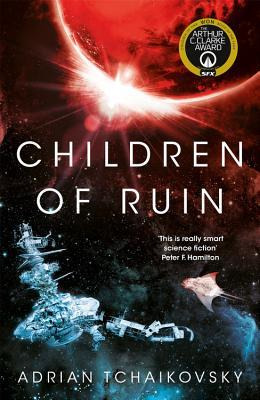

Brain Plague by Joan Slonczewski*
Chrys, a struggling artist, agrees to become a carrier for a sentient strain of microbes. With their help, Chrys breathes new life into her career and becomes a success. But every microbe society is different - some function as friends and brain enhancers to their carrier, while others become a literal brain plague, a living addiction taking over the life of their carrier. And like every society, the microbe community is in constant flux - including the one inside Chrys's head.
Children of Ruin (Children of Time series) by Adrian Tchaikovsky*
Sequel to Children of Time. Millenia and generation spanning scifi. After the collapse of the Earthen empire, a project to terraform various planets and use them to uplift other species to sentience in left unfinished. However, both species and planets continue evolving on their own, and when what remains of humanity flees the dying Earth millenia later, these planets might be their only hope of survival. But the uplifted species aren't the only intelligent life out there, and are far from the most dangerous as the survivors encounter something capable of terraforming the human body itself.
Leech by Hiron Ennes*
Unbeknownst to humanity, a sentient hive mind has taken over the entire medical profession to ensure the health of their host species. One of their doctors is sent off to an isolated location where they’re cut off from the rest of the hive mind, only to realize they’re faced with a rivaling parasitic entity. Leech hands you only just enough information to get by, and whether its historical fantasy, an alternate timeline, or futuristic post apocalypse is hard to determine. It’s spooky and a bit weird and wildly creative.

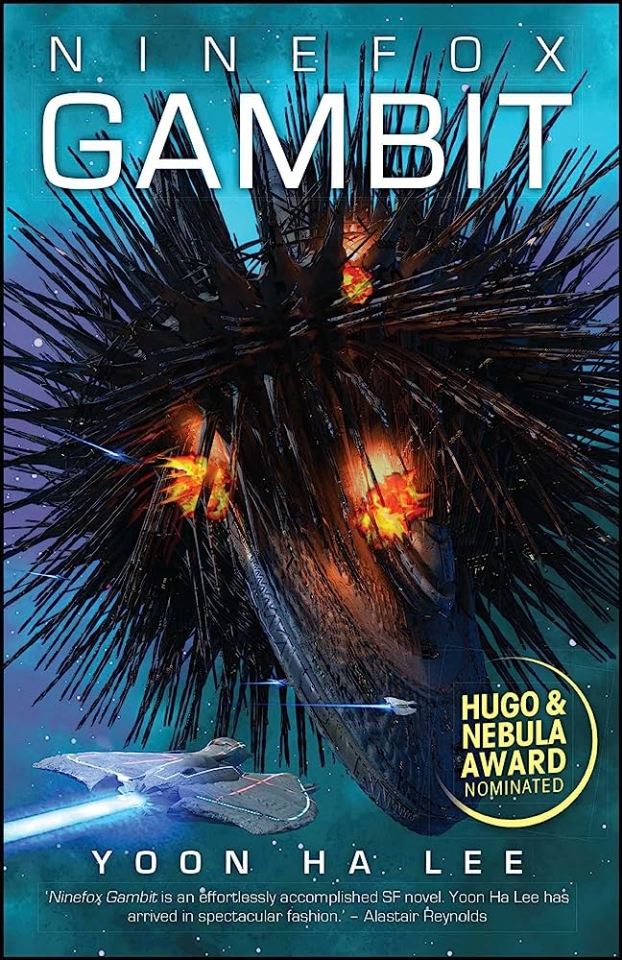
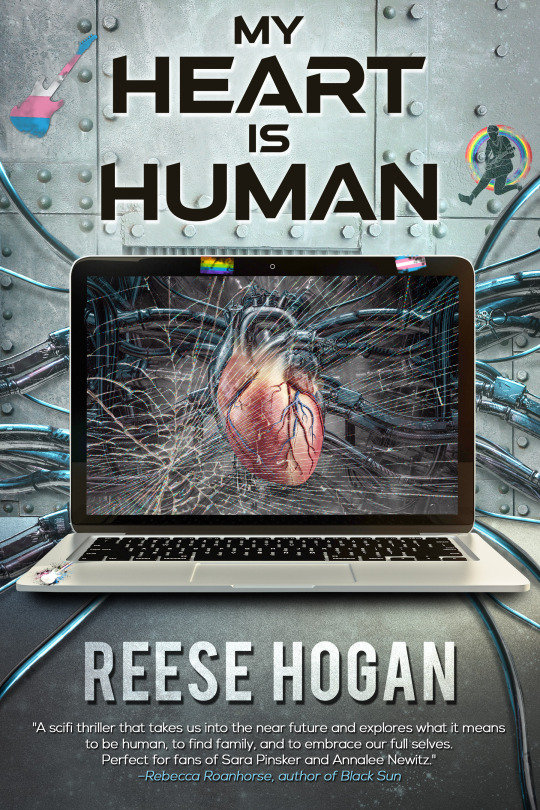
A Memory Called Empire (Texicalaan duology) by Arkady Martine
Mahit Dzmare is an ambassador sent to the center of the multi-system Teixcalaanli Empire, where she discovers that her predecessor has died. Trying to protect her home, a small independent mining station, from being taken over by the empire, Mahit struggles to find out the truth of her predecessor's death while carrying the voice of his ghost in her head, guiding her as best he can. Features a sapphic relationship but focuses more on world-building than romance.
Ninefox Gambit (Machineries of Empire trilogy) by Yoon Ha Lee*
Military space opera where belief and culture shape the laws of reality, causing all kinds of atrocities as empires do everything in their power to force as many people as possible to conform to their way of life to strengthen their technology and weapons. It’s also very queer, with gay, lesbian and trans major characters, albeit little to no romance. Disgraced Captain Kel Cheris is given a second chance by allying with the undead Commander Shous Jedao, who in life never lost a battle, but also went mad and massacred his own army. Now, Cheris must decide just how far she can trust him, with her forces as well as with her sense of self.
My Heart is Human by Reese Hogan
Nine years ago, all complex technology was made illegal. This complicates life for Joel, young transgender single father, as a bionic just uploaded itself into his brain without consent. Scared of losing his daughter, Joel tries to keep the bionic secret while using it to fix his life, but things quickly get more complicated as the bionic gains more and more control of his body. A bit simplistic in writing style but makes a lot of cool parallels of bodily autonomy to Joel’s experiences as a transman.
Bonus rec: if you like the general concept of struggling for physical control over one’s body with an AI, may I also suggest the (much grittier and gory) movie Upgrade.

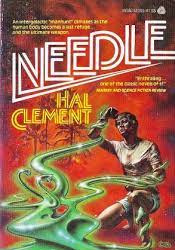

The Host by Stehpenie Meyer*
The Host follows Wanderer, an alien part of an invading force on Earth. Humans have been defeated and are being used as host bodies, but Wanderer's host Melanie is being difficult and refuses to fade away. Instead she fills Wanderer's mind with images of Jared, the man she loves and who's still in hiding. With Melanie's feelings bleeding into Wanderer's the two reluctantly ally to find and keep safe the man they both love. While The Host does feature Meyer's trademark romance - of which I'm not the biggest fan - the more interesting and arguably more central relationship is that between Wanderer and her human host.
Needle by Hal Clement
1950s classic. A small island in the pacific ocean and a fourteen-year-old boy have just become the center of an interstellar chase between an alien Hunter and the criminal he’s pursuing. Robert is a regular boy, but he has a very special passenger: an alien symbiont hiding inside his body. The alien became stranded on Earth as he pursued a criminal of his own species, and now they are both trapped on the same island, playing a game of cat and mouse as Robert and the Hunter struggle to find their prey before it finds them.
Malevolent by Harlan Guthrie*
Lovecraftian horror mystery. Private detective Arthur Lester wakes up in his office, his partner dead, memories fuzzy, vision gone, and the voice of a malevolent entity in his mind. Unable to see, Arthur is forced to rely on guidance from the entity as he attempts to solve the mystery of what it is and where it came from. Is this a book? No. But as someone who reads mostly audiobooks, the difference between a book and a fiction podcast is negligible, and also I love this story and its characters and want all of you to do so too.



Goddess of Filth by V. Castro
Novella. What starts as a drunken seance between friends ends with one of them chanting in Nahuatl, the language of their Aztec ancestors. Following that night, the formerly shy Fernanda has changed. While her family calls for priests, claiming her possessed by a demon, Fernanda's friends believe what has taken up residence in her is something decidedly older. A quick read featuring female rage, desire and empowerment, this is a different twist on the typical possession story.
This Alien Shore by C.S. Friedman
Space opera in which humanity found a way to faster than light travel and began establishing colonies all over the galaxy, only to belatedly realize the method of FTL caused irreversible mutations and disabilities and leaving their nascent colonies to die. Much later, many of the colonies have survived and thrived, and one has found a new method of FTL travel, allowing an interconnected space society to grow. However, Earth is on the hunt for their method and is prepared to do anything to steal it. Trapped in the middle of all this and forced on the run is young Jamisia, who is little by little coming to realize that not only might she be the very solution Earth is after, she's also not alone in her own mind and body.
Touch by Claire North*
Kepler should have died long ago, beaten to death in an alley. Instead, a switch happened as Kepler leapt into and took control of the body of the killer. Since then, Kepler has lived in body after body, having gained the ability to inhabit anyone with a touch and stay for anything from a few minutes to an entire lifetime. Kepler cares much for the host bodies, and when one of them is brutally assassinated, Kepler must find the killer, avenge the host's death, and stop it from happening again. You want a fucked up main character with fucked up morals who still genuinely cares for people? Then boy do I have the book for you!
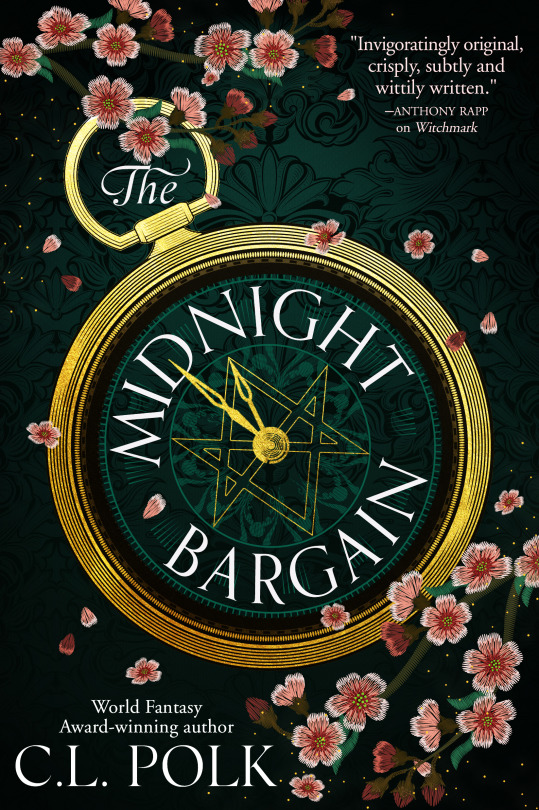


The Midnight Bargain by C.L. Polk
Fantasy romance. Beatrice Clayborn is a sorceress, but if her family gets its way she won't remain so for long. Married women are forbidden from practicing magic, and Beatrice's father is intent on marrying her off to save them from destitution. Beatrice has a different plan: become so powerful a sorceress that she can herself save her father's business and becomes too valuable to marry off. To achieve this, she strikes a bargain with a minor spirit of fortune. In return, the spirit demands to be present in Beatrice's body as she experiences her first kiss... a kiss with a man who might jeopardize all her plans.
Pandemonium by Daryl Gregory
Del Perce's world is almost indistinguishable from ours, the only difference being the presence of possessing entities that can strike with little to no warning. When he was young, Del was possessed by one of these demons, which was eventually exorcised. But now he’s experiencing a resurgence of symptoms, a voice in his head demanding to be freed. To save himself, Del races to find out the truth behind the possessions.
The Thousand Eyes (The Serpent Gates duology) by A.K. Larkwood*
Sequel to The Unspoken Name (please read that first, I promise this duology is very worth it). These books have a lot going on: portals, flying ships, orcs, elves, creepy snake gods, possessions, cults, immortal evil mages who traumatize teens as their hobby, gay and lesbian frenemies, the works. Csorwe, born and raised in a cult and meant as a sacrifice, escapes her intended death with a mage who becomes her mentor. But he has dangerous motives of his own, and Csorwe must decide where her loyalties lie.

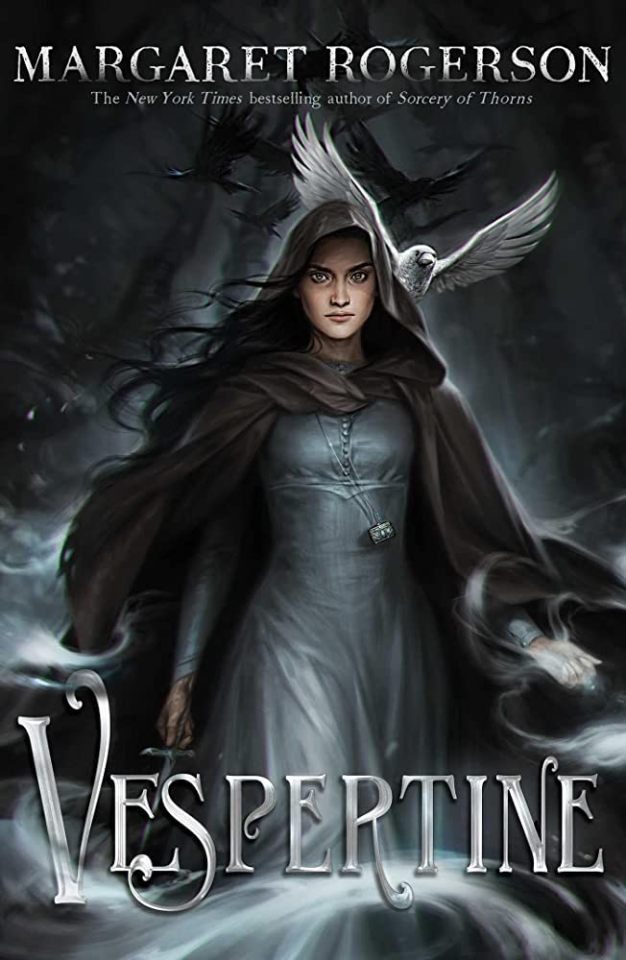

A Skinful of Shadows by Frances Hardinge
Young adult, historical. All her life, Makepeace's mother has been teaching her how to defend herself from the possession of ghosts, until one day her guard drops and a wild and fierce spirit slips in. When Makepeace's mother dies and she is sent to live with her father's family, this spirit might be her only defence. Because her family is harboring dark secrets, and they have plans for Makepeace... plans which do not care for her well-being. Unlike most other YA I've read in terms of vibes and plot, A Skinful of Shadows is a unique and intriguing read.
Vespertine by Margaret Rogerson*
Young adult fantasy. Artemisia prefers the dead to the living, and is training to become a Gray Sister, a nun who helps the souls of the deceased pass on to the afterlife rather than remain as dangerous spirits. To defend her convent, Artemisia accepts the help of a dangerous revenant, a powerful spirit which grants her great power but also could possess her the moment her guard is lowered. As evil threatens her homeland, Artemisia and the revenant must find a way to work together.
A Psalm of Storms and Silence by Roseanne A. Brown
Young adult fantasy. Sequel to A Song of Wraiths and Ruin. To save his family, Malik has made a deal with a dangerous spirit with equally dangerous demands - the death of the princess. Meanwhile, princess Karina is seeking her own power, meaning to resurrect her assassinated sister no matter what the prize. As their paths intertwine, the consequences of their pursuits keep getting higher, both for them, their nation, and the entire world.


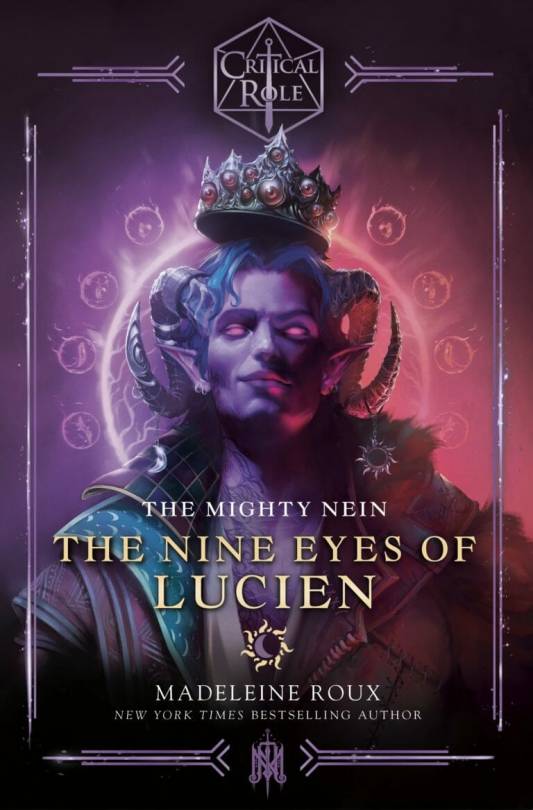
Grey Sister (Book of the Ancestor trilogy) by Mark Lawrence
Sequel to Red Sister. Fantasy with sci-fi flavor. Nona is being raised to become a killer at the Convent of Sweet Mercy. But dangerous classes aren’t Nona's only problem: her planet is slowly dying, and her own inner demons whisper in her mind. As the sun grows weaker and ice creeps ever closer, Nona and her allies race to save themselves from extinction.
Fifth Quarter (Quarters series) by Tanya Huff*
Sequel to Sing the Four Quarters. Fifth Quarter is only loosely connected to the first book in the series so you could read it as a standalone, however I still recommend starting with Sing the Four Quarters as it is very good. Bannon and Vree are siblings and highly skilled assassins, but they are put to the test when a failed assassination finds them sharing a body, their intended victim having stolen Bannon's. Now, they must choose between remaining loyal to their Empire, or helping their supposed victim find a new body to steal - and he doesn't want just any body, he wants the royal prince.
The Nein Eyes of Lucien by Madeline Roux*
Recommended with the caveat that you're unlikely to get the full experience unless you have also watched Critical Role Campaign 2 (which is quite the time investment, but very worth it). It follows the antagonist Lucien, first owner of the body we know as Mollymauk Tealeaf, both before Lucien lost his body and after he regains it in the ultimate struggle against Mollymauk's old friends, the Mighty Nein.
Bonus AKA I haven't read these yet but they seem really cool
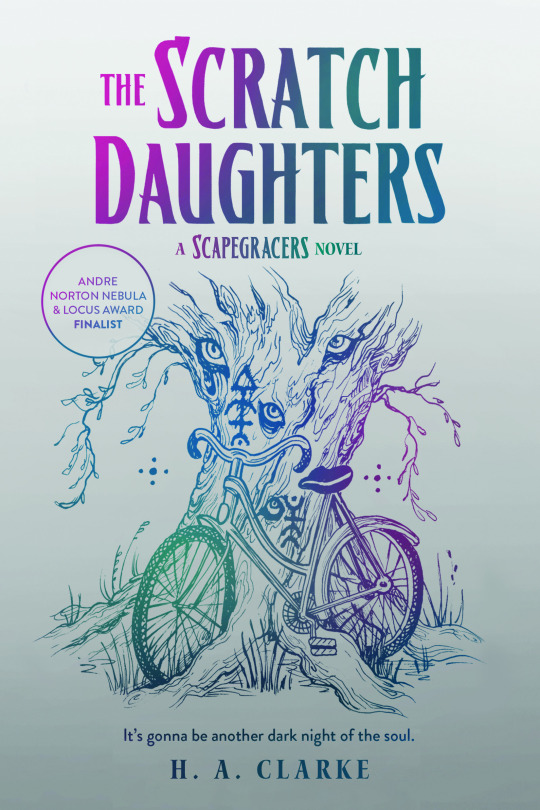

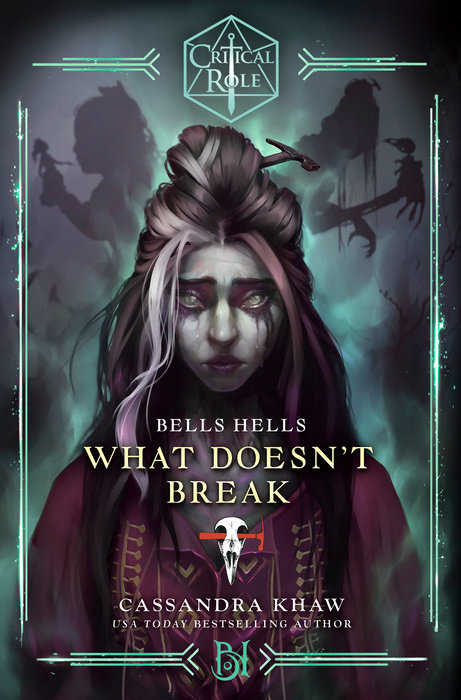
The Scratch Daughters (The Scapegracers trilogy) by H.A. Clarke
Sequel to The Scrapegracers. Sideways Pike used to be able to perform only party tricks, but in finding new friends and starting a coven, the four become powerful witches. But not everyone wants witches around. After having gotten her spectre stolen and losing her ability to perform magic, Sideways is forced to rely on Mr. Scratch, a book demon taking the place of her spectre to keep her alive. Now she must struggle to get her magic back before it’s too late.
Riding the Odds by Lynda K. Scott
Sci-fi romance. Tara Rowan is a spaceship captain with secrets - a past she wants to leave behind, and Zie, an organic symbiote which grants her greater strengths and reflexes. But when sexy Holy Knight Trace Munroe blackmails her in an attempt to rescue a missing princess, Tara's secrets are in danger of being revealed.
What Doesn't Break by Cassandra Khaw
Like The Nine Eyes of Lucien, you're unlikely to get the full experience of What Doesn't Break unless you're also a viewer of Critical Role. It follows the backstory of Laudna, undead sorceress and warlock with the ghostly presence of the necromancer who once murdered her keeping residence in her mind and tugging at her strings.
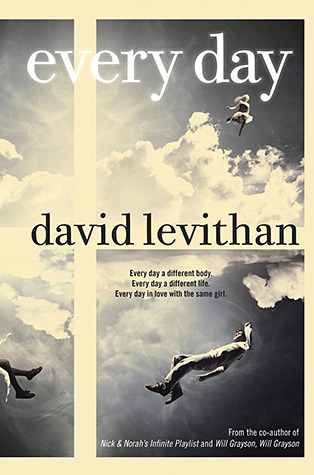
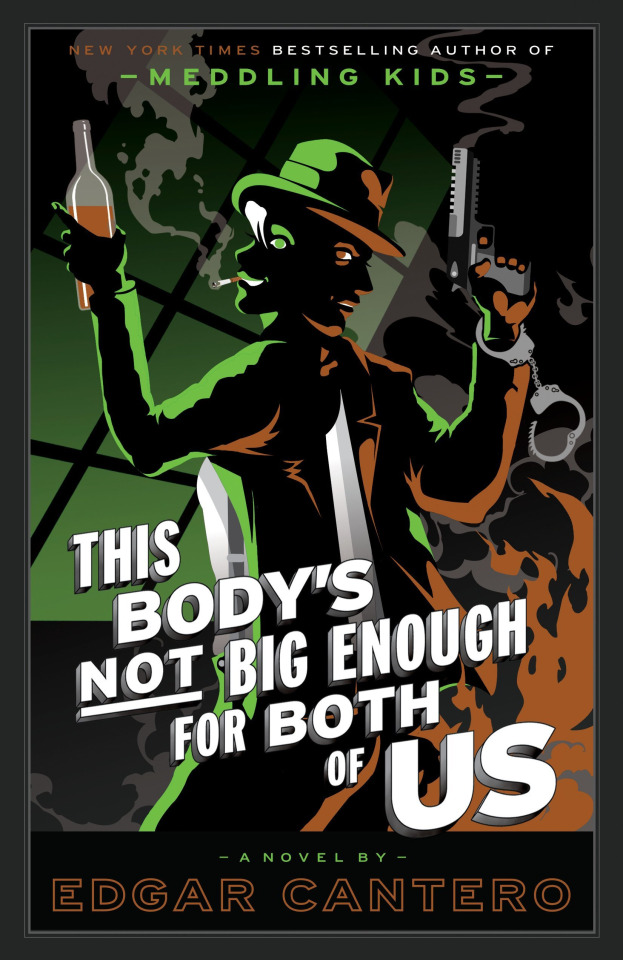

Every Day (Every Day trilogy) by David Levithan
Every day, A wakes up with a new body and a new life. A has rules on how to deal with this existence - don't get attached, don't get noticed, and don't interfere. But when A finds themself falling in love, all their established rules no longer apply. This one has also been adapted as a movie!
This Body's Not Big Enough for Both of Us by Edgar Cantero
A. and Z. Kimrean are twin siblings and private eyes - they also share the same body, calling themselves A.Z. When someone starts murdering the sons and heirs of a ruthless crime boss, it falls on A.Z. Kimrean to solve the case and find the killer before all out gang war breaks out.
A Madness of Angels (Matthew Swift series) by Kate Griffin
Two years ago, sorcerer Matthew Swift was killed. Today, he woke back up. And he isn't alone in his body... Now, he seeks vengeance not only against the one who killed him, but also against the one who brought him back.
Honorary mentions AKA these didn't really work for me but maybe you guys will like them: Bone Rider by J. Fally, The Lives of Tao by Wesley Chu, What's Left of Me by Kat Zhang, Hunter of Demons by Jordan L. Hawk, Odder Still by D.N. Bryn
#nella talks books#children of time#leech#a memory called empire#machineries of empire#my heart is human#the host#needle#malevolent podcast#goddess of filth#this alien shore#touch#the midnight bargain#brain plague#pandemonium#the unspoken name#a skinful of shadows#vespertine#a song of wraiths and ruin#red sister#fifth quarter#the nein eyes of lucien
84 notes
·
View notes
Text

New SpaceTime out Friday
SpaceTime 20250523 Series 28 Episode 62
A new theory to explain the birth of Dark Matter
A new study claims Dark Matter may have formed when fast particles slowed down and got heavy.
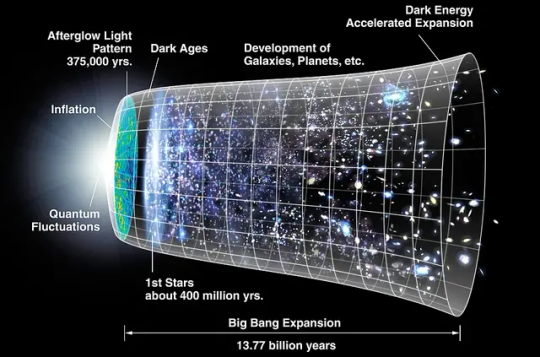


First Visible-light Aurorae seen on Mars
NASA’s Mars Perseverance Mars rover has made history by detecting visible-light Aurorae on another planet for the first time.




A new type of massive X-ray explosion discovered near monster black holes
Astronomers have for the first time probed the physical environment of a recently discovered new type of repeating X-ray outburst found near monster supermassive black holes.





The Science Report
Artificial intelligence chatbots found to exaggerate the scope of research in scientific papers.
Engineers invent a small neuromorphic device that detects hand movement and stores memories.
Scientists have discovered the oldest ancestor for all the Australian tree frogs
Skeptics guide to remote viewing Martians
SpaceTime covers the latest news in astronomy & space sciences.
The show is available every Monday, Wednesday and Friday through your favourite podcast download provider or from www.spacetimewithstuartgary.com
SpaceTime is also broadcast through the National Science Foundation on Science Zone Radio and on both i-heart Radio and Tune-In Radio.
SpaceTime daily news blog: http://spacetimewithstuartgary.tumblr.com/
SpaceTime facebook: www.facebook.com/spacetimewithstuartgary
SpaceTime Instagram @spacetimewithstuartgary
SpaceTime twitter feed @stuartgary
SpaceTime YouTube: @SpaceTimewithStuartGary
SpaceTime -- A brief history
SpaceTime is Australia’s most popular and respected astronomy and space science news program – averaging over two million downloads every year. We’re also number five in the United States. The show reports on the latest stories and discoveries making news in astronomy, space flight, and science. SpaceTime features weekly interviews with leading Australian scientists about their research. The show began life in 1995 as ‘StarStuff’ on the Australian Broadcasting Corporation’s (ABC) NewsRadio network. Award winning investigative reporter Stuart Gary created the program during more than fifteen years as NewsRadio’s evening anchor and Science Editor. Gary’s always loved science. He was the dorky school kid who spent his weekends at the Australian Museum. He studied astronomy at university and was invited to undertake a PHD in astrophysics, but instead focused on a career in journalism and radio broadcasting. Gary’s radio career stretches back some 34 years including 26 at the ABC. His first gigs were spent as an announcer and music DJ in commercial radio, before becoming a journalist, and eventually joining ABC News and Current Affairs. He was part of the team that set up ABC NewsRadio and became one of its first on air presenters. When asked to put his science background to use, Gary developed StarStuff which he wrote, produced and hosted, consistently achieving 9 per cent of the national Australian radio audience based on the ABC’s Nielsen ratings survey figures for the five major Australian metro markets: Sydney, Melbourne, Brisbane, Adelaide, and Perth. That compares to the ABC’s overall radio listenership of just 5.6 per cent. The StarStuff podcast was published on line by ABC Science -- achieving over 1.3 million downloads annually. However, after some 20 years, the show finally wrapped up in December 2015 following ABC funding cuts, and a redirection of available finances to increase sports and horse racing coverage. Rather than continue with the ABC, Gary resigned so that he could keep the show going independently. StarStuff was rebranded as “SpaceTime”, with the first episode being broadcast in February 2016. Over the years, SpaceTime has grown, more than doubling its former ABC audience numbers and expanding to include new segments such as the Science Report -- which provides a wrap of general science news, weekly skeptical science features, special reports looking at the latest computer and technology news, and Skywatch – which provides a monthly guide to the night skies. The show is published three times weekly (every Monday, Wednesday and Friday) and available from the United States National Science Foundation on Science Zone Radio, and through both i-heart Radio and Tune-In Radio.
#science#space#astronomy#physics#news#nasa#astrophysics#esa#spacetimewithstuartgary#starstuff#spacetime#hubble#hubble telescope#hubble space telescope
9 notes
·
View notes
Note
Hello bitches! I’m sorry if you’ve answered something like this before, but I need some advice!
So my college offers a major that’s Design but a bit more™️ and includes stuff like graphic design as well as web design, game design, Artificial intelligence, animation, etc and I’ve been told, teaches you python coding as well. It seems pretty well rounded to me but I’m not a major yet, and my main concern is that I won’t get what I paid for, or that I might still end up in a non-lucrative career cause, well, most of it is still design and the way creatives are treated and paid is just not the best. I was wondering what thoughts you had on this major, (does it sound like a good choice?) or what kind of information do I need to ask my advisor for to make sure its a degree that gets me job that pays well? Should I even trust what they say? I would love to hear you guys’ take on this.
Thanks so so much and hope you guys have a lovely day!
Hello pet! This is a great question and we're very proud of you for thinking critically about this decision before picking a major. I also think it's a good idea to ask questions from your advisor. To that end, we wrote the following articles, which should help guide the conversation:
Your College Major May Not Prepare You for Your Job—but It Can Prepare You for Life
High School Students Have No Way of Knowing What Career to Choose. Why Do We Make Them Do It Anyway?
The Actually Helpful, Nuanced, Non-Bullshit Way to Choose a Future Career
If you found this helpful, consider joining our Patreon.
10 notes
·
View notes
Text
Laura Agnusdei - Flowers Are Blooming In Antarctica - even the promo copy is good
Italian composer and saxophonist Laura Agnusdei returns with “Flowers Are Blooming In Antarctica” a career defining record that sees the artist diving into uncharted waters, a profound timeless meditation on our relationship with planet Earth, the eco-conflicts arising and the fascination with non human forms of life, backdropped to a vivid soundtrack of coral exotica, spiritual Jazz, fourth-world minimalism, tropical electronics, tribal futurism and contemporary elegance. Every step of Laura Agnusdei’s path, from electroacoustic experimentation to her constant research based upon the acoustic dimension of wind instruments and their interaction with polymorphic electronic sounds, seems to have pivoted into a new sense of awareness, as if the mind and intellectual practice has finally caught up with the body, the heart and the soul, resulting in her most organic and transcendent work yet. “Flowers Are Blooming In Antarctica” is loosely inspired around a trifecta of pioneering ideas that explore unconventional reality: James Bridle’s ‘Ways Of Being’ with his radical story that mixes ecology, tech and intelligence; Luigi Serafini’s late-70s fantastical ‘Codex Seraphinianus’, an unparalleled collection of flora, fauna, anatomies metamorphosed into new fragile beings; J.G. Ballard’s climate-fiction foreshadowing sci-fi ruminations. These influences shift Agnusdei’s musical trajectory injecting doses of terrestrial malaise, the earthy sub-saharan ‘Ittiolalia’ with its wah-wah filtered sax and trance inducing groove; the rubbery playfulness of ‘Oasi Bar’; the gentle eco-system of ‘P.P.R.N’ reminiscent of Herbie Hancock’s innovative synthesis of funk, space and synthesizers; the kaleidoscopic northern lights of ‘Emperor Penguin Lullaby’, where south-east Asian echoes reach icy shores; the Jon Hassell hyper-ambience of ‘Cuttlefish REM Phase’; the post-apocalyptic march of ‘The Drowned World, a jazz standard for an artificial civilization on the brink of self-destruction. Nothing feels out of place and it’s no coincidence that one of the most powerful messages on the record is delivered on centerpiece ‘Are We Dinos?’ via an interview conducted with two preschoolers. Radical optimism or sonic liberation? Laura Agnusdei’s tenor sax cuts deep all across “Flowers Are Blooming In Antarctica”, a laser baton raised up to the clouds, a conductor orchestrating devotional soundscapes for a three-eyed dolphin, guiding us through prismatic pastures and acidic oceans. Her tropicalized realm is pin-pointed with Miles-like sheer clarity, a bristling nakedness on the verge of exploding at any time, creating an album where ascension becomes the unifying code. Laura Agnusdei: tenor sax, electronics Giulio Stermieri: farfisa organ, synthesizers, assistant production Edoardo Grisogani: percussion, drum pads Giacomo Bertocchi: alto sax, clarinet, flute Ramon Moro: trumpet, flugelhorn Teguh Permana: tarawangsa Giovanni Minguzzi: drums Daniele Castellano: artwork eee studio: design, layout & packaging
#Bandcamp#Laura Agnusdei#jazz#experimental#italy#avant garde#exotica#fourth world#maple death records#2025
6 notes
·
View notes
Text
Python for Beginners: Launch Your Tech Career with Coding Skills
Are you ready to launch your tech career but don’t know where to start? Learning Python is one of the best ways to break into the world of technology—even if you have zero coding experience.
In this guide, we’ll explore how Python for beginners can be your gateway to a rewarding career in software development, data science, automation, and more.
Why Python Is the Perfect Language for Beginners
Python has become the go-to programming language for beginners and professionals alike—and for good reason:
Simple syntax: Python reads like plain English, making it easy to learn.
High demand: Industries spanning the spectrum are actively seeking Python developers to fuel their technological advancements.
Versatile applications: Python's versatility shines as it powers everything from crafting websites to driving artificial intelligence and dissecting data.
Whether you want to become a software developer, data analyst, or AI engineer, Python lays the foundation.
What Can You Do With Python?
Python is not just a beginner language—it’s a career-building tool. Here are just a few career paths where Python is essential:
Web Development: Frameworks like Django and Flask make it easy to build powerful web applications. You can even enroll in a Python Course in Kochi to gain hands-on experience with real-world web projects.
Data Science & Analytics: For professionals tackling data analysis and visualization, the Python ecosystem, featuring powerhouses like Pandas, NumPy, and Matplotlib, sets the benchmark.
Machine Learning & AI: Spearheading advancements in artificial intelligence development, Python boasts powerful tools such as TensorFlow and scikit-learn.
Automation & Scripting: Simple yet effective Python scripts offer a pathway to amplified efficiency by automating routine workflows.
Cybersecurity & Networking: The application of Python is expanding into crucial domains such as ethical hacking, penetration testing, and the automation of network processes.
How to Get Started with Python
Starting your Python journey doesn't require a computer science degree. Success hinges on a focused commitment combined with a thoughtfully structured educational approach.
Step 1: Install Python
Download and install Python from python.org. It's free and available for all platforms.
Step 2: Choose an IDE
Use beginner-friendly tools like Thonny, PyCharm, or VS Code to write your code.
Step 3: Learn the Basics
Focus on:
Variables and data types
Conditional statements
Loops
Functions
Lists and dictionaries
If you prefer guided learning, a reputable Python Institute in Kochi can offer structured programs and mentorship to help you grasp core concepts efficiently.
Step 4: Build Projects
Learning by doing is key. Start small:
Build a calculator
Automate file organization
Create a to-do list app
As your skills grow, you can tackle more complex projects like data dashboards or web apps.
How Python Skills Can Boost Your Career
Adding Python to your resume instantly opens up new opportunities. Here's how it helps:
Higher employability: Python is one of the top 3 most in-demand programming languages.
Better salaries: Python developers earn competitive salaries across the globe.
Remote job opportunities: Many Python-related jobs are available remotely, offering flexibility.
Even if you're not aiming to be a full-time developer, Python skills can enhance careers in marketing, finance, research, and product management.
If you're serious about starting a career in tech, learning Python is the smartest first step you can take. It’s beginner-friendly, powerful, and widely used across industries.
Whether you're a student, job switcher, or just curious about programming, Python for beginners can unlock countless career opportunities. Invest time in learning today—and start building the future you want in tech.
Globally recognized as a premier educational hub, DataMites Institute delivers in-depth training programs across the pivotal fields of data science, artificial intelligence, and machine learning. They provide expert-led courses designed for both beginners and professionals aiming to boost their careers.
Python Modules Explained - Different Types and Functions - Python Tutorial
youtube
#python course#python training#python#learnpython#pythoncourseinindia#pythoncourseinkochi#pythoninstitute#python for data science#Youtube
4 notes
·
View notes
Text
Future-Ready Courses for BTech/BCA Students – Learn. Build. Grow.

My Growth Crafter is your gateway to mastering tech with AI-powered online learning. Built for students in BTech, BCA, and MCA programs with Skill development for students, our platform bridges academic theory with industry-practical knowledge. We don’t just teach—we guide you to become creators, problem solvers, and innovators.
Our platform offers comprehensive courses in Machine Learning, App Development, and MERN Stack Web Development. What sets us apart is our unique integration of Artificial Intelligence that personalizes your educational journey. Every module is tailored based on your progress, strengths, and areas for improvement, ensuring a smoother and smarter way to learn.
Whether you're just starting out or looking to upskill, we provide both theory sessions and hands-on project training. You’ll build real apps, intelligent websites, and working ML models—gaining more than just knowledge. You’ll walk away with a portfolio that proves your abilities.

We also conduct free tech workshops for students, where participants get to experience live learning with expert mentors, industry insights, and access to recorded content. These workshops are open to all students who want to experience AI-driven education without upfront costs.
The world is moving fast, and employers are hiring for future-ready skills. My Growth Crafter helps you stay ahead by offering certifications, live mentorship, and AI-enhanced feedback. You’re never alone—we help you grow with structured support and community collaboration.
As a trusted student learning platform, we’ve helped thousands of learners across India build meaningful careers. From personalized dashboards to weekly projects and quizzes, our ecosystem is built for deep, engaged, and long-term learning.

Our mission is simple: Deliver quality education that adapts to you. We combine expert teaching with cutting-edge technology to help you become the kind of professional today’s companies want to hire.
No matter your background, if you have the passion to learn, we have the tools to teach. With My Growth Crafter, you’ll gain not just technical skills, but confidence, mentorship, and direction.
Get started with AI-powered education designed for you. Choose a course, join a workshop, and begin your journey toward career success—today.
My Growth Crafter: Learn smart. Build better. Grow faster.
#Skill development for students#Online courses in India#Free tech workshops for students#hands-on project training#Career Building for BTech/BCA/MCA
2 notes
·
View notes
Text
What’s the Big Deal About Python?
If you’ve been around the tech world even for a minute, you’ve probably heard people raving about Python. No, not the snake, we’re talking about the programming language. But what’s so special about it? Why is everyone from beginner coders to AI researchers using Python like it’s their best friend? Let’s break it down in simple words.

Easy to Learn, Easy to Use
First things first, Python is super easy to learn. The code looks almost like regular English, which means you don’t have to memorize weird symbols or endless rules. If you’re just starting your programming journey, Python won’t scare you away.
For example, printing a sentence in Python is as simple as:

That’s it. No extra setup, no confusing syntax. It just works.
Used Everywhere
Python isn’t just for small scripts or learning projects. It’s everywhere, web development, data science, automation, artificial intelligence, game development, even robotics.
Big companies like Google, Netflix, and Instagram use Python behind the scenes to make their products work better.
Huge Library Support
One of the best things about Python is its rich library ecosystem. Libraries are like pre-written tools that help you do complex stuff without writing all the code yourself. Want to analyze data? Use Pandas. Want to build a web app? Try Django or Flask. Want to build a chatbot or train a machine learning model? There’s TensorFlow and PyTorch for that.
Great Community
Python has a massive community. That means if you ever get stuck, there’s a good chance someone has already solved your problem and posted about it online. You’ll find tons of tutorials, forums, and helpful folks willing to guide you.
Not the Fastest, But Fast Enough
Python isn’t the fastest language out there — it’s not meant for super high-speed system-level programming. But for most tasks, it’s more than fast enough. And if you really need to speed things up, there are ways to connect Python with faster languages like C or C++.
So, Should You Learn Python?
Absolutely. Whether you’re a student, a hobbyist, or someone switching careers, Python is a great place to start. It’s beginner friendly, powerful, and widely used. You’ll be surprised how much you can build with just a few lines of Python code.
2 notes
·
View notes
Text
Entry Level AI Jobs Remote No Experience Worldwide: Certified AI Jobs Review - Is It Legit?

Looking for entry-level AI jobs that require no experience? Discover how the Certified AI Jobs website provides worldwide remote opportunities to start an online business using AI.
The demand for AI-driven jobs is booming, and the Certified AI Jobs website is opening doors for beginners. Offering entry-level AI jobs that are remote and require no experience, this platform is making it easier than ever to break into the digital world.
Introduction
Artificial Intelligence (AI) is transforming industries, and now, it's opening up new opportunities for individuals seeking online work. For those who have little to no experience but a willingness to learn, Entry Level AI Jobs Remote No Experience Worldwide: Certified AI Jobs offers an accessible path to digital success. This training program teaches users how to leverage AI tools and platforms like YouTube and Amazon to create an online business from scratch.
With flexibility, remote access, and a user-friendly approach, Certified AI Jobs is gaining attention among those looking for an alternative career path. But what exactly does this program offer, and how can it benefit those eager to dive into the AI space? Let’s find out.
What Is the Certified AI Jobs Website About?
Certified AI Jobs is a specialized training course designed to help individuals start their own AI-assisted online business. The course provides step-by-step guidance on utilizing AI tools for video creation, content writing, and affiliate marketing.
What Makes It Stand Out?
Remote & Flexible: Work from anywhere in the world.
No Experience Needed: Beginners can start immediately with simple training.
AI-Powered Business Model: Learn how to use AI for content creation and marketing.
Affordable Access: A one-time payment with no recurring fees.
Amazon Partner Program: Discover how to monetize with Amazon’s affiliate network.
How Does Certified AI Jobs Work?
The training program revolves around using AI tools to build an online presence. Here’s what members can expect:
AI-Assisted Content Creation: Learn to create YouTube videos and product reviews without filming or writing from scratch.
Affiliate Marketing Strategies: Understand how to earn commissions by promoting Amazon products.
Step-By-Step Tutorials: Follow structured video lessons that guide users through each stage of setting up an AI-driven business.
Support & Resources: Access ongoing support and additional resources to enhance learning...
Full Entry Level AI Jobs Remote No Experience Worldwide: Certified AI Jobs Review here! at https://scamorno.com/Certified-AI-Jobs-Review/?id=tumblr-entrylevelremotenoexperienceworldwide
Who Can Benefit from Entry Level AI Jobs Remote No Experience Worldwide: Certified AI Jobs?
This program is ideal for:
Individuals seeking a remote income without technical expertise.
Stay-at-home parents looking for flexible work opportunities.
Students and recent graduates wanting entry-level experience in AI-related fields.
Anyone interested in building a side income using AI.
What's Included in the Certified AI Jobs Training?
Certified AI Jobs offers a structured learning experience with multiple training modules. Here’s a breakdown:
Module 1: Introduction to AI & Online Business
Module 2: Creating AI-Generated Product Review Videos
Module 3: Understanding Amazon’s Affiliate Program
Module 4: Selecting High-Demand Products to Promote
Module 5: Monetization Strategies for AI Content
Module 6: Best Practices for Scaling Your Online Business
Additionally, users receive:
Instant access to training materials.
A support system available via email and ticket-based assistance.
A bonus e-book collection on digital marketing and traffic strategies.
Frequently Asked Questions
How do I access the training? Members receive instant access to the course via email upon purchase.
Do I need AI experience? No. The program is designed for complete beginners and provides step-by-step guidance.
Can I do this while working a full-time job? Absolutely! The course is flexible, allowing users to learn and implement at their own pace.
Is there a refund policy? Yes. The program offers a 60-day money-back guarantee if users are not satisfied...
Full Entry Level AI Jobs Remote No Experience Worldwide: Certified AI Jobs Review here! at https://scamorno.com/Certified-AI-Jobs-Review/?id=tumblr-entrylevelremotenoexperienceworldwide
3 notes
·
View notes
Text

In today's rapidly improving technology industry, staying ahead and advancing in your career requires more than just technical skills. To thrive in this competitive field, individuals must continuously learn, adapt, and position themselves as valuable assets to potential employers.
In this blog post, we'll explore practical strategies and resources to boost your career in the technology industry.
We'll discuss the value of xml epg guide, provide career-boosting strategies, and offer tips on sharing helpful content to showcase your expertise.
The Power of EPG Guides Online
EPG (Electronic Program Guide) guides aren't just for TV programming; they can also serve as a valuable resource for job seekers in the technology industry.
EPG guides provide a centralized source of information to research and prepare for job opportunities. They offer insights into industry trends, emerging technologies, and the latest developments, ensuring you stay informed and ahead of the curve.
Career Boosting Strategies
To enhance your career prospects in the technology industry, consider these strategies:
Building a Strong Professional Network: Cultivate relationships with professionals in your field through networking events, online communities, and industry conferences. Establishing meaningful connections can lead to mentorship opportunities, job referrals, and valuable insights.
Developing In-demand Technical Skills: Continuously invest in upgrading and expanding your technical skills. Stay updated with emerging technologies and industry trends. Consider pursuing certifications or online courses to gain expertise in high-demand areas, such as cloud computing, artificial intelligence, or cybersecurity.
Crafting an Effective Resume and Cover Letter: Tailor your resume and cover letter to highlight relevant skills and experiences. Showcase your accomplishments, projects, and impact in previous roles. Ensure that your application materials are concise, well-structured, and free from errors.
Acing Job Interviews: Prepare thoroughly for job interviews by researching the company, understanding the job requirements, and practicing common interview questions. Demonstrate your problem-solving abilities, communication skills, and a genuine passion for technology.
Sharing Helpful Content
Creating and sharing relevant, informative content is an effective way to demonstrate your expertise and increase visibility in the technology industry. Consider the following tips:
Start a Tech Blog: Share your knowledge, experiences, and insights through a personal tech blog. Write about industry trends, tutorials, or showcase your project work. Engage with the tech community by commenting on related blogs or participating in forums.
Active Social Media Presence: Utilize social media platforms, such as Twitter, LinkedIn, and GitHub, to share relevant industry news, showcase your projects, and engage with industry professionals. Building an active and professional social media presence can increase your visibility and attract potential employers.
Online Portfolio/Projects: Create an online portfolio showcasing your technical projects, such as coding samples, applications, or website designs. Demonstrating your practical skills through tangible examples can pique the interest of hiring managers and give them an insight into your capabilities.
In the ever-rising technology industry, boosting your career requires a proactive approach. Utilize the power of xml epg guide to stay informed, adopt effective career-boosting strategies, and share helpful content to showcase your expertise.
By continuously investing in your professional development, building a robust network, and actively engaging with the tech community, you'll be well-positioned to advance your career and achieve your goals.
Remember, success in the technology industry requires not only technical proficiency but also a commitment to continuous learning, adaptability, and a passion for innovation.
youtube
8 notes
·
View notes
Text

New SpaceTime out Monday
SpaceTime 20250512 Series 28 Episode 57
Discovery of fifteen new giant galaxies
Astronomers have discovered 15 giant radio galaxies each more than 3 million light years across and each hosting a highly active supermassive black hole.

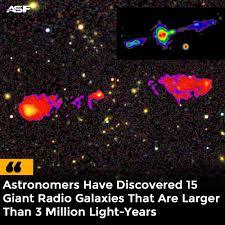

Saturn’s moon Titan is changing quickly
Astronomers have discovered that the orbit of the Saturnian moon Titan’s is changing very quickly on geologic timescales.


Failed Soviet Venus spacecraft crashes back to Earth
A failed Soviet era spacecraft bound for Venus 53 years ago has crashed back to Earth somewhere between the Indian Ocean west of Jakarta and the Southern Ocean off the Western Australian south coast.





Could Artificial intelligence exterminate humanity
The warnings from science fiction have been numerous and constant, artificial intelligence could pose a real threat to the survival of humanity. But that’s science fiction – where does the truth lie.


The Science Report
Using cannabis during pregnancy may increase the risk of several adverse birth outcomes.
Scientists sequence the complete genome of one of Australia’s most iconic and endangered frogs.
New research has found that Australians are flourishing as they get older.
Skeptics guide to Argentina’s Bigfoot
SpaceTime covers the latest news in astronomy & space sciences.
The show is available every Monday, Wednesday and Friday through your favourite podcast download provider or from www.spacetimewithstuartgary.com
SpaceTime is also broadcast through the National Science Foundation on Science Zone Radio and on both i-heart Radio and Tune-In Radio.
SpaceTime daily news blog: http://spacetimewithstuartgary.tumblr.com/
SpaceTime facebook: www.facebook.com/spacetimewithstuartgary
SpaceTime Instagram @spacetimewithstuartgary
SpaceTime twitter feed @stuartgary
SpaceTime YouTube: @SpaceTimewithStuartGary
SpaceTime -- A brief history
SpaceTime is Australia’s most popular and respected astronomy and space science news program – averaging over two million downloads every year. We’re also number five in the United States. The show reports on the latest stories and discoveries making news in astronomy, space flight, and science. SpaceTime features weekly interviews with leading Australian scientists about their research. The show began life in 1995 as ‘StarStuff’ on the Australian Broadcasting Corporation’s (ABC) NewsRadio network. Award winning investigative reporter Stuart Gary created the program during more than fifteen years as NewsRadio’s evening anchor and Science Editor. Gary’s always loved science. He was the dorky school kid who spent his weekends at the Australian Museum. He studied astronomy at university and was invited to undertake a PHD in astrophysics, but instead focused on a career in journalism and radio broadcasting. Gary’s radio career stretches back some 34 years including 26 at the ABC. His first gigs were spent as an announcer and music DJ in commercial radio, before becoming a journalist, and eventually joining ABC News and Current Affairs. He was part of the team that set up ABC NewsRadio and became one of its first on air presenters. When asked to put his science background to use, Gary developed StarStuff which he wrote, produced and hosted, consistently achieving 9 per cent of the national Australian radio audience based on the ABC’s Nielsen ratings survey figures for the five major Australian metro markets: Sydney, Melbourne, Brisbane, Adelaide, and Perth. That compares to the ABC’s overall radio listenership of just 5.6 per cent. The StarStuff podcast was published on line by ABC Science -- achieving over 1.3 million downloads annually. However, after some 20 years, the show finally wrapped up in December 2015 following ABC funding cuts, and a redirection of available finances to increase sports and horse racing coverage. Rather than continue with the ABC, Gary resigned so that he could keep the show going independently. StarStuff was rebranded as “SpaceTime”, with the first episode being broadcast in February 2016. Over the years, SpaceTime has grown, more than doubling its former ABC audience numbers and expanding to include new segments such as the Science Report -- which provides a wrap of general science news, weekly skeptical science features, special reports looking at the latest computer and technology news, and Skywatch – which provides a monthly guide to the night skies. The show is published three times weekly (every Monday, Wednesday and Friday) and available from the United States National Science Foundation on Science Zone Radio, and through both i-heart Radio and Tune-In Radio.
#science#space#astronomy#physics#news#nasa#astrophysics#esa#spacetimewithstuartgary#starstuff#spacetime#hubble#hubble space telescope#hubble telescope
11 notes
·
View notes
Text
Which program (MBA or PGDM) is better for a career in consulting?
Top PGDM/MBA with Business Analytics Colleges in Greater Noida, Bangalore, Gurgaon & MAT45% Percentile Colleges in Ghaziabad
Introduction
In today’s data-driven world, Business Analytics has become a crucial component of management education. Students aspiring to build a career in business intelligence, data analytics, and strategic decision-making often opt for PGDM/MBA with Business Analytics programs. If you are searching for the best PGDM/MBA with Business Analytics colleges in Greater Noida, Bangalore, and Gurgaon, or if you have a MAT 45% percentile score and are looking for colleges in Ghaziabad, this guide will help you make the right choice.
Why Choose PGDM/MBA with Business Analytics?
A PGDM/MBA with Business Analytics program integrates advanced data analytics, statistical modeling, artificial intelligence, and machine learning with business decision-making. This specialization prepares students for high-demand careers in fields such as finance, marketing, operations, and consulting.
Key Benefits:
Industry-oriented curriculum focusing on real-world analytics applications.
Exposure to tools like Python, R, SQL, Tableau, and Power BI.
Strong placement opportunities with leading companies.
Hands-on experience through internships, live projects, and case studies.
Top PGDM/MBA with Business Analytics Colleges in Greater Noida
Greater Noida has emerged as an education hub, offering some of the best PGDM/MBA programs with a Business Analytics specialization. Here are the top institutes:
1. Birla Institute of Management Technology (BIMTECH), Greater Noida
One of the leading B-schools in India.
Offers PGDM in Business Analytics with strong corporate collaborations.
Excellent placement records with top recruiters like Deloitte, EY, and PwC.
2. Galgotias University, Greater Noida
Offers an MBA with Business Analytics as a primary focus.
Industry-driven curriculum and data analytics labs.
Tie-ups with leading tech companies for practical exposure.
3. Sharda University, Greater Noida
Offers an MBA with a focus on Business Analytics and Big Data.
Strong industry partnerships for real-world learning.
Well-equipped infrastructure and expert faculty.
Best PGDM/MBA with Business Analytics Colleges in Bangalore
Bangalore, known as the Silicon Valley of India, is home to top business schools offering Business Analytics specializations.
1. Indian Institute of Management Bangalore (IIMB)
One of India’s premier business schools.
Offers an MBA with Business Analytics courses integrated into the curriculum.
Strong industry collaborations with top tech firms.
2. Christ University, Bangalore
Provides an MBA in Business Analytics with hands-on exposure to analytics tools.
Strong placement record with companies like Google, Amazon, and Microsoft.
Experienced faculty and corporate tie-ups for practical learning.
3. Alliance University, Bangalore
Offers a PGDM in Business Analytics.
Focus on machine learning, AI, and data visualization.
Excellent placement support and industry projects.
Top PGDM/MBA with Business Analytics Colleges in Gurgaon
Gurgaon, a leading corporate and technology hub, offers great options for students looking for PGDM/MBA programs in Business Analytics.
1. Management Development Institute (MDI), Gurgaon
One of India’s top-ranked B-schools.
Offers a PGDM in Business Analytics with strong industry exposure.
High placement rates with top firms in consulting and finance.
2. Amity Business School, Gurgaon
Provides an MBA in Business Analytics.
Focuses on AI, big data, and digital transformation.
Good placement assistance with reputed organizations.
3. ICFAI Business School (IBS), Gurgaon
Offers a well-structured MBA with a Business Analytics specialization.
Practical exposure through industry projects and workshops.
Collaborations with analytics firms for real-time learning.
MAT 45% Percentile Colleges in Ghaziabad
If you have a MAT 45% percentile score, you can still get admission to reputed management colleges in Ghaziabad. Here are some of the top options:
1. Institute of Management Studies (IMS), Ghaziabad
Accepts MAT scores for PGDM admissions.
Offers Business Analytics as a specialization.
Strong faculty and placement support.
2. Institute of Technology & Science (ITS), Ghaziabad
Provides PGDM with a focus on Business Analytics.
Industry-aligned curriculum with data science training.
Placement support in reputed companies.
3. Jaipuria Institute of Management, Ghaziabad
Accepts MAT scores and provides a well-structured MBA program.
Specializes in Business Analytics, Marketing, and Finance.
Strong industry tie-ups for internships and placements.
Conclusion
A PGDM/MBA with Business Analytics is a valuable investment for those looking to build a career in data-driven decision-making. Whether you are looking for top colleges in Greater Noida, Bangalore, or Gurgaon, or seeking admission in MAT 45% percentile colleges in Ghaziabad, there are several excellent institutions to choose from.
When selecting a college, consider factors like faculty expertise, curriculum, placement records, and industry collaborations to make the right choice.
For more details on admissions and career guidance, stay connected with Pathshalahub – your trusted education consultation platform!
#college#high school#school system#success#studying#university#Ahmedabad – IIM Ahmedabad#Bangalore – IIM Bangalore#Christ University#XIME#Kolkata – IIM Calcutta#IMI Kolkata#Delhi – FMS Delhi#IMI Delhi#IIT Delhi (DMS)#Mumbai – SPJIMR#NMIMS#JBIMS#IIT Bombay (SJMSOM)#Hyderabad – ISB Hyderabad#IIM Hyderabad#ICFAI Business School#Chennai – Great Lakes#IIT Madras (DoMS)#Loyola Institute of Business Administration (LIBA)#Lucknow – IIM Lucknow#Indore – IIM Indore#Pune – Symbiosis (SIBM)#PUMBA#BIMM
2 notes
·
View notes
Text
A new and starkly different vision for the US Environmental Protection Agency (EPA) has been outlined by the Trump administration – one that involves mass staff cuts, an influx of industry lobbyists and, unusually, the promotion of artificial intelligence as a key agency priority.
A set of five “pillars” issued by new EPA administrator, Lee Zeldin, to guide the agency, set up under President Richard Nixon in 1970 to protect US public health and the environment, does include one referencing “clean land, air and water for every American”.
But the other four priorities move into areas beyond the traditional mission of the EPA, such as bolstering “American energy dominance”, a pledge to speed up the approvals of new projects such as oil and gas drilling, a focus on ensuring “a great comeback of the auto industry” and a promise to “make the United States the Artificial Intelligence capital of the world”.
The new set of priorities come amid tumult at the EPA, where more than 1,000 members of staff have been told they face being immediately fired. Career staff who oversee the enforcement of pollution laws and hazardous waste cleanup have already been reportedly demoted, with Donald Trump stacking the agency with a new cohort of former industry lobbyists who have spent their careers attacking protections covering everything from water quality to greenhouse gas emissions to toxic chemicals.
[In an interview with Breitbart] the former Republican member of Congress, who predicted Trump’s term would be “the greatest four years in American history”, did not mention the climate crisis or communities burdened by pollution in his list of priorities. He has, however renamed the agency’s Gulf of Mexico division to the Gulf of America division, following Trump’s attempt to rebrand the body of water.
“There has been talk through the years about how the world was imminently about to end because of climate change, and in the name of that threat there was a push to do some crazy things,” Zeldin told Breitbart, adding that predictions of climate change ending the world had “come and gone”.
In fact, previous projections of global heating have proved to be largely accurate, with some models even underestimating the record-breaking heat that the world is now experiencing. The north pole is currently 20C hotter than its long-term average, with recent research showing Greenland’s vast ice sheet is cracking up faster than expected, further accelerating sea level rise.
“This is just the beginning of the Trump administration’s mission to traumatize the EPA,” said Jeremy Symons, senior adviser to the Environmental Protection Network, an organization of former EPA staff. “The wealthy corporate polluters close to Trump won’t be satisfied until he tears the place down and put polluters in control.
“The Clean Air Act and Clean Water Act were not written to advance AI, they were put in place to protect our air and water. That seems to have fallen off the list of priorities of the Trump administration. If your child carries an inhaler, where do you see them in this agenda? If you drink water from lead pipes, where are you in this agenda?”
This is a truncated version of the first half of the linked article, it is worth it to read the whole thing, which includes more detailed information on attempts to push out personnel.
#human rights#environment#epa#ai#environmental protection agency#us politics#health and safety#fossil fuels#capitalism#climate change#clean water
6 notes
·
View notes